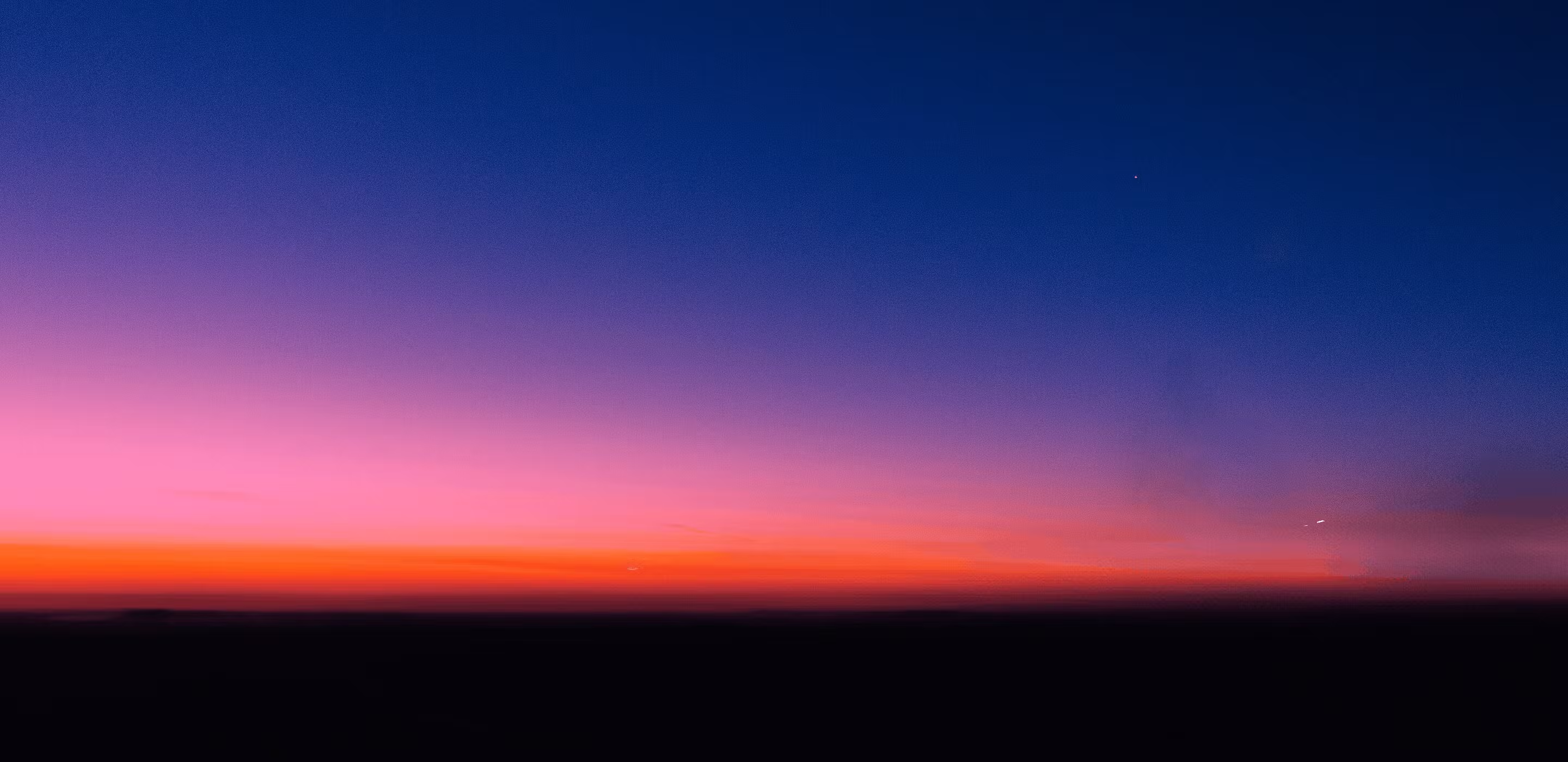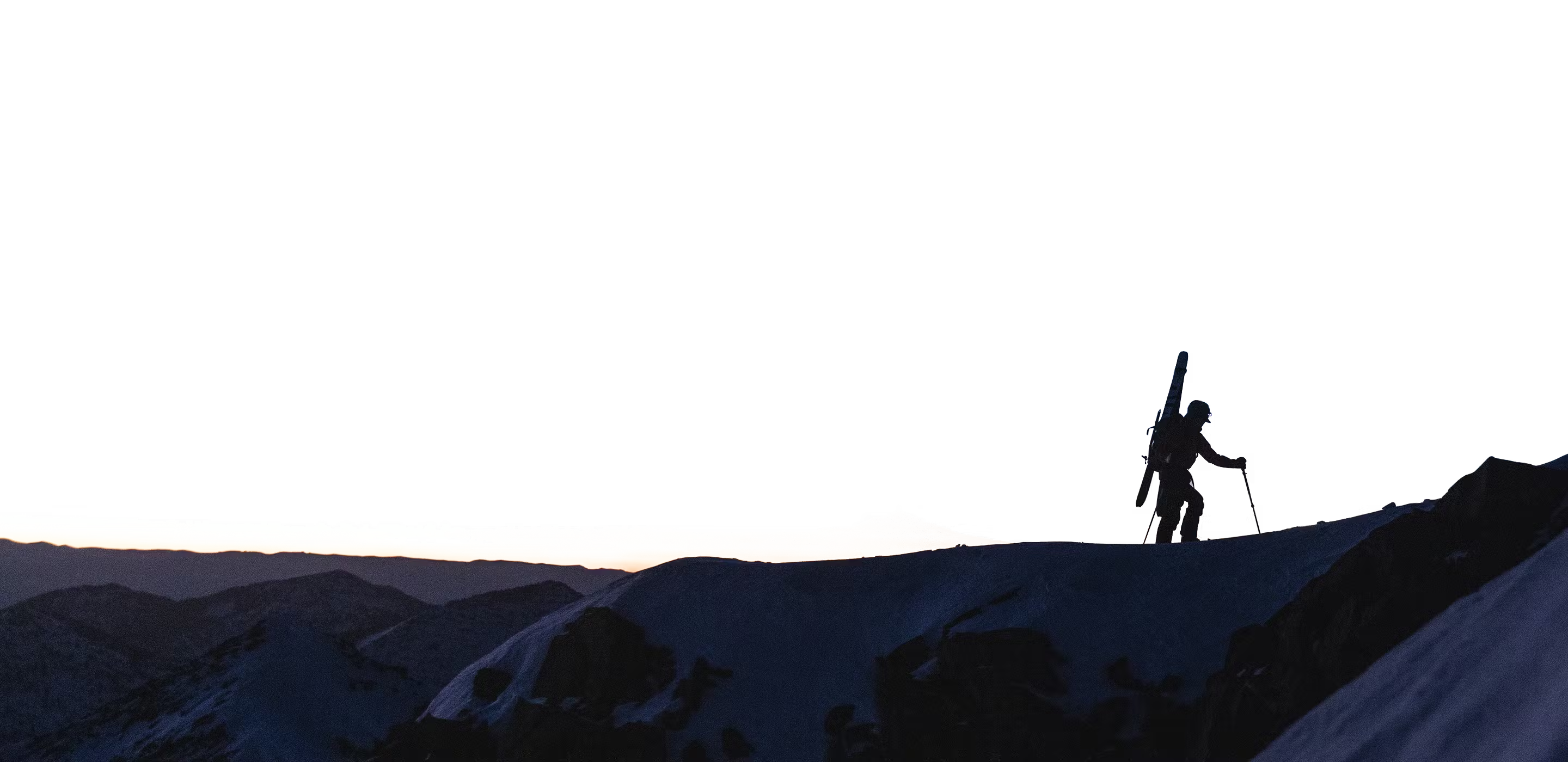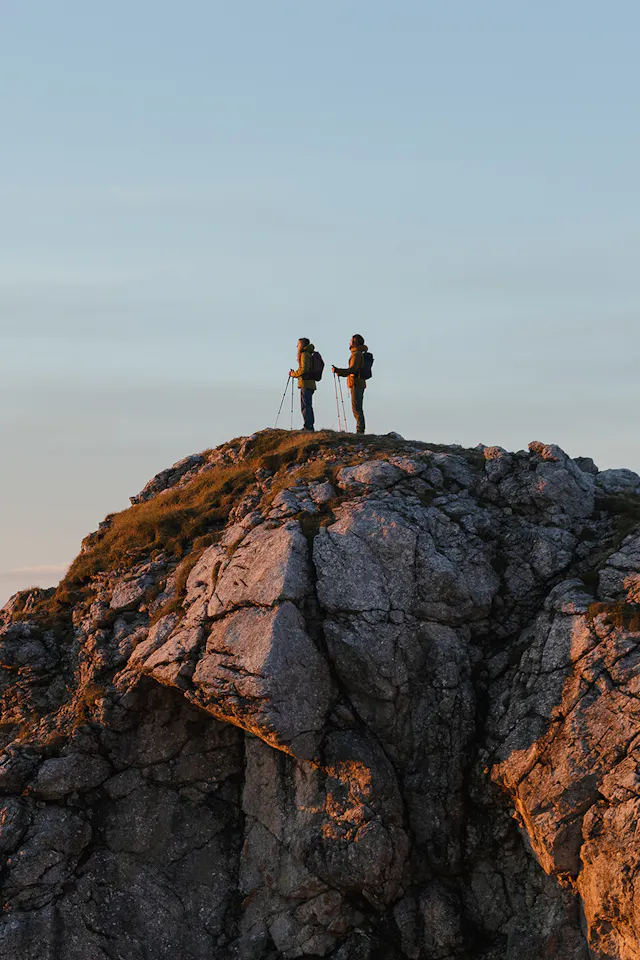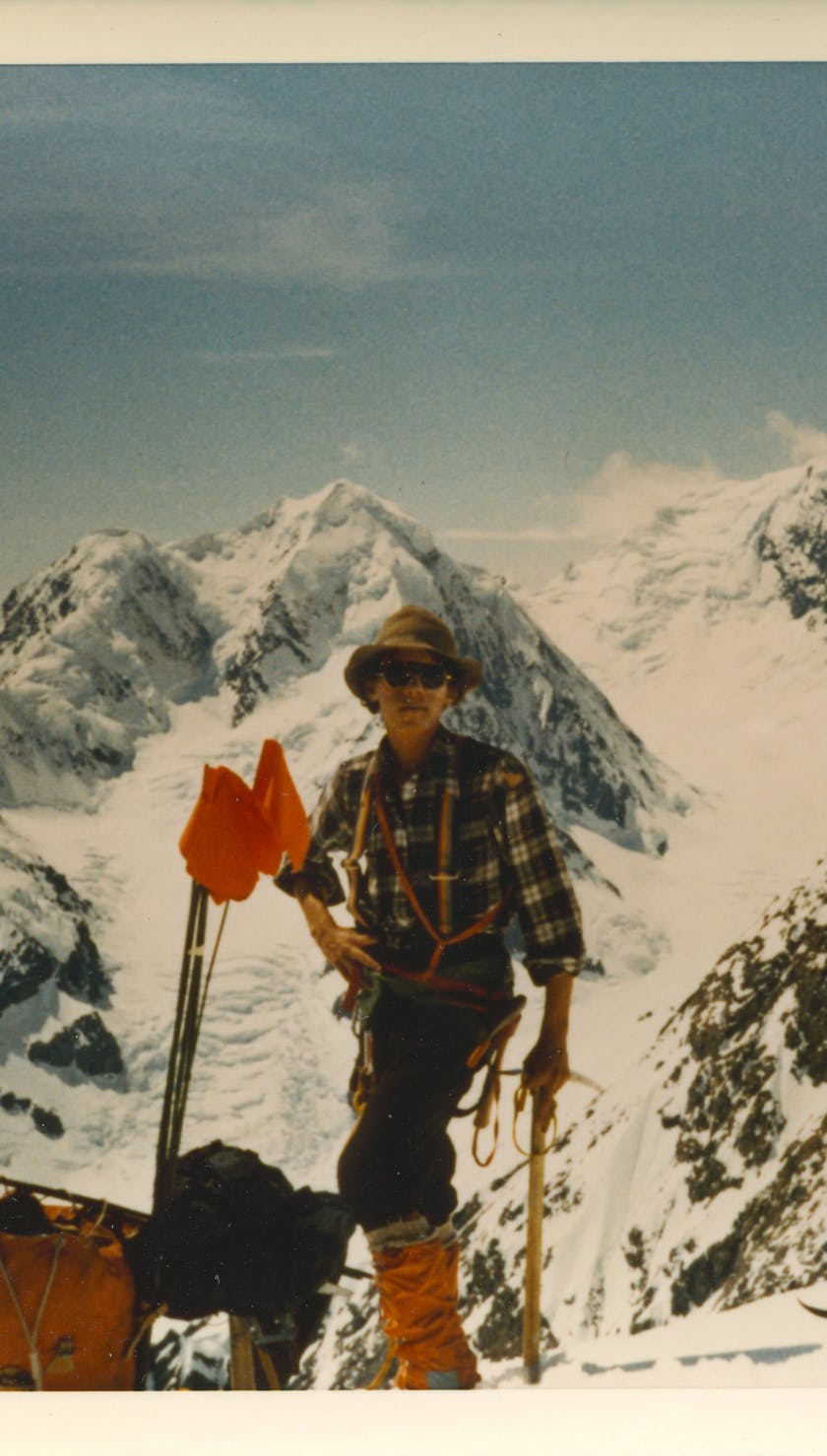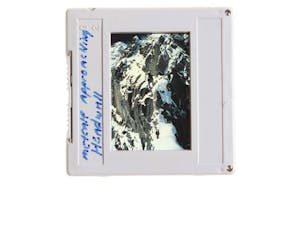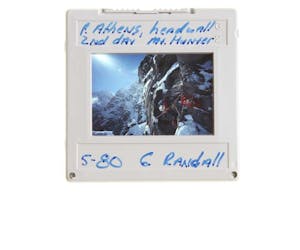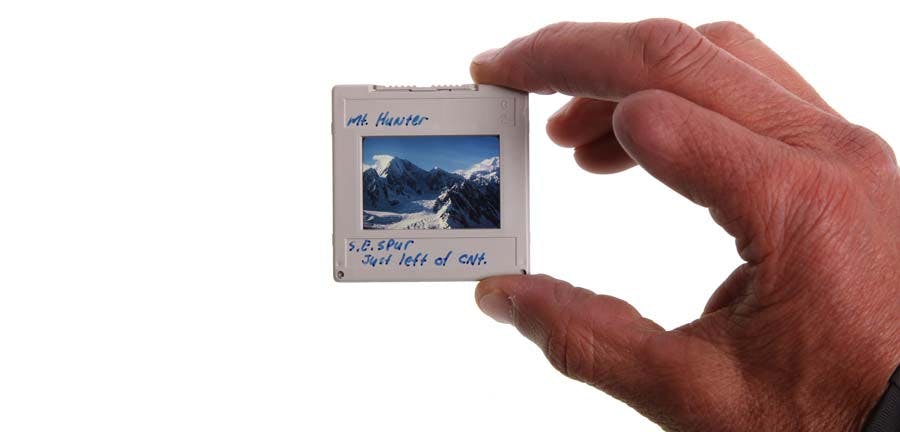
MOMENTS OF CONSEQUENCE, RESOLVE AND AN INVITATION
It is hard to see a crossroads or moment of consequence in one’s life before it occurs. It is even more difficult to understand the resolve it can take to achieve certain big goals. Yet it is easy to accept an invitation from a trusted friend.
For thirteen days in early May of 1980, I suffered hard. With two trusted climbing partners, Glenn Randall and Pete Athans, we struggled, yet persevered on an ascent of the central buttress of the south face of Mount Hunter in Alaska. Looking back, it was only through our resolve that we were able to survive those thirteen days of hard climbing and terminally cold bivys. The experience was a crossroads for all of us, one we couldn’t fully appreciate until afterward. Had we known what was in store for us, we might not have accepted that simple invitation so enthusiastically and willingly.
Thirty-four years later, the lessons I learned on that climb as an ambitious 24-year-old still hold true. The tenets forged from my Hunter experience have been foundational personally and professionally in my daily work at Black Diamond for the past 25 years.
So why is this relevant today?
Today our public lands are under attack. We are at a moment of consequence. We need to display creativity and resolve and band together with trusted partners, friends and colleagues to organize our efforts if we hope to preserve and keep our canyons, rivers, and crags both wild and open for human powered recreation.
To give this context, here is a brief history on what I call the Big Bang that set the outdoor industry on its course 25 years ago. In early 1989, Chouinard Equipment, the climbing and telemark ski company I had been running since the early 1980’s filed for Chapter 11 bankruptcy protection in the face of several “failure to warn” lawsuits and sky-rocketing insurance premiums that were dwarfing the company’s profitability. The symbolic and real impact of this filing was felt like a thermonuclear blast in the American climbing, ski and outdoor sports and industries.
The Big Bang was the confluence of three major forces that hit our still small but rapidly growing community of climbers, mountaineers, and off-piste skiers as well as the industry itself. More than anything, it was a result of the 1980’s revolution in tort law in America combined with our growing numbers. Tort law allowed the users of ski areas, of boulders, of cliffs and of climbing equipment to sue the owners, land managers or manufacturers if they got hurt climbing or skiing. The result was ski areas banning skiers from going out of bounds unless you wanted to lose your ticket, pay a $500 fine, and spend a night in jail. Land managers and property owners started to ban climbing and manufacturers succumbed to failure to warn litigation. In addition, the rapid rise of sport climbing and the placement of fixed anchors had public land managers in a quandary as to how to treat a fixed anchor – as garbage or something else. Many land managers began the formulation of policies to ban the placement of fixed anchors altogether.
"WE ARE AT A MOMENT OF CONSEQUENCE. WE NEED TO DISPLAY CREATIVITY AND RESOLVE TO KEEP OUR CANYONS, RIVERS, AND CRAGS OPEN FOR PUBLIC RECREATION."
The growth in active outdoor participation, the growth of the industry and the speed at which these other destructive forces combined to create the Big Bang caught us all flat–footed. Fledgling manufacturers of climbing and backcountry ski gear, we had always seen ourselves as nomadic iconoclasts, traveling with the seasons, camping and climbing where we wanted and how we wanted. We saw ourselves as outsiders and rebels, our numbers small and stealthy and our industry insignificant.
The 1989 Chapter 11 protection filing of Chouinard Equipment shattered that illusion and forced us to face the reality of our numbers, our impact on public lands and the higher profile of our industry. We were exposed and naked: there was no Access Fund, no Winter Wildlands, no IMBA, no climbing gear standards, no Outdoor Industry Association. It was that void of leadership and organization that was the catalyst for the employees at Chouinard Equipment and me, along with a global network of climbing and skiing friends, to commit ourselves to creating Black Diamond. BD was created to make a difference on behalf of a fellow community of users. The “how” we were going to do that was through innovative, robust, beautifully clean and paradigm changing gear: equipment and apparel built for the community. The “why” we were going to do that was to preserve of the sublime places we plied our craft—the public land—and advocate to secure access on behalf of our community.
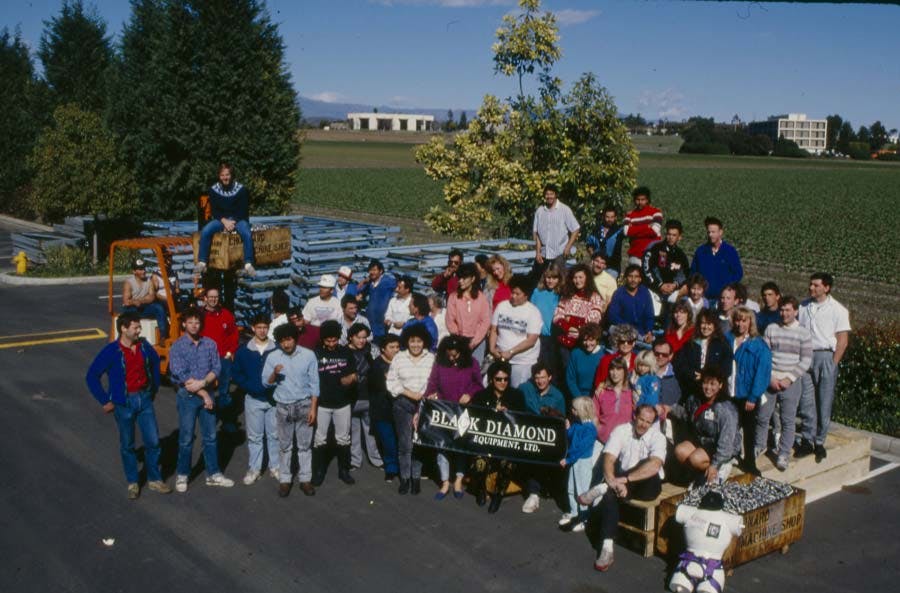
The first employees of Black Diamond Equipment Ltd, 1989
Though the Big Bang occurred over 25 years ago, Black Diamond has helped support the birth and growth of our much coveted and appreciated user groups, industry organizations and conservation groups that are all fighting for the vibrancy of place, sport and tribe. Black Diamond continues to be a committed leader in “championing the issues of great importance to our community” as this is a tenet of our business. It is as important to us as the gear we make.
Our sports are dynamic and bold and require continued evolution in gear, attitude and commitment despite the underlying values and ethos having a timeless consistency to them. Likewise, the ever-growing challenges that our sports, community and industry face require us to be nimble, mentally agile, long-term strategists, committed believers in the sanctity of place, partners, style and activism.
Once again, like in 1988/89, you can feel the build-up of seismic forces that hold the dangerous potential for another Big Bang. Rather than tort law, the largest challenge is the “final splitting up” of the last great places. Will most be lost to extractive industries of mining, coal, gas, oil, tar sands, logging and/or real-estate development? Will iconic beauty be lost to an “all uses on all lands” mentality? Will the well-financed motorized lobbies prevail at splitting our traditional coalition of users, industry and conservationists because each group is too ideologically rigid to appreciate just how much they are losing for themselves and all generations to come?
Black Diamond has been—and remains—committed to making a difference for our community. Today, that means working to find common ground with other like-minded organizations and user groups who are championing to keep our sports, places, and tribe vibrant, wild and healthy.
Next week, in Jackson, Wyoming, SHIFT—a celebration of and discussion on the future of conservation—will be addressing some of these crucial issues with some of the movers and shakers in the space. It will be done in an inspiring setting, with other rejuvenating social activities, among enthusiastic colleagues and friends. Black Diamond will be there. I hope you too can join for a day or two.
Best Wishes,
Peter
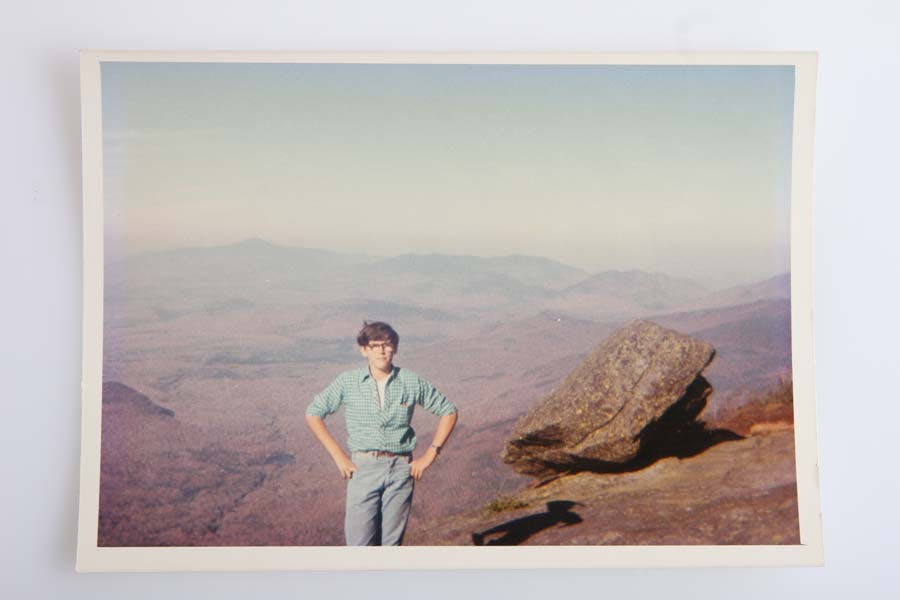
Metcalf, 13, on the summit of Mt. Colden in the Adirondacks. It was his first 4,000' peak.
